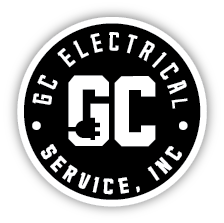Optimizing operational efficiency and reducing costs are paramount goals for every commercial enterprise. One area where significant improvement can be made is electricity management. With the advent of smart technologies, businesses now have powerful tools to monitor, analyze, and control their electricity usage like never before. This blog explores the various smart technologies available for commercial electricity management, their benefits, implementation considerations, and real-world examples of successful deployments.
Smart Technologies in Commercial Electricity Management
Electricity is a fundamental resource for any commercial entity, powering everything from lighting and HVAC systems to manufacturing equipment and IT infrastructure. Efficient management of electricity consumption reduces operational costs, contributes to sustainability goals, and enhances overall business resilience. Traditional methods of electricity management often lack real-time insights and control, leading to inefficiencies and unnecessary expenses. Innovative technologies, however, offer a transformative solution by enabling proactive monitoring, intelligent automation, and data-driven decision-making.
Benefits of Implementing Smart Technologies
Embracing smart technologies empowers businesses with advanced capabilities to streamline operations, optimize resources, and foster sustainability. These solutions leverage data-driven insights and automation to drive efficiency, reduce expenses, and stay agile in a rapidly evolving business landscape.
Enhanced Energy Efficiency
Smart technologies provide granular insights into electricity consumption patterns, allowing businesses to identify areas of inefficiency and implement targeted improvements. Real-time monitoring and analytics enable proactive energy management strategies, such as load balancing, demand response, and energy-efficient equipment scheduling. By optimizing energy usage, businesses can significantly reduce their carbon footprint and operational costs while ensuring optimal performance of critical systems.
Cost Savings
Effective electricity management translates directly into cost savings for businesses. By identifying energy-intensive processes or equipment, businesses can implement measures to reduce peak demand charges, avoid unnecessary usage during high-rate periods, and negotiate better utility tariffs based on accurate consumption data. Smart technologies also facilitate predictive maintenance of electrical systems, preventing costly downtime and repair expenses.
Sustainability and Environmental Impact
Reducing energy consumption through smart technologies contributes to corporate sustainability initiatives and environmental stewardship. By minimizing electricity usage and optimizing resource allocation, businesses can lower greenhouse gas emissions and lessen their ecological footprint. Sustainable practices enhance corporate reputation and attract environmentally conscious customers and investors.
Smart Technologies for Commercial Electricity Management
Various smart technologies are revolutionizing how businesses manage their electricity consumption. From advanced metering systems and energy monitoring platforms to predictive analytics and demand response solutions, these technologies enable proactive energy management strategies. Implementing these innovations empowers businesses to optimize energy usage, enhance operational efficiency, and achieve significant cost savings while reducing environmental impact.
Smart Meters and Advanced Metering Infrastructure (AMI)
Smart meters are digital devices that record electricity consumption at frequent intervals and communicate this data to utility companies for billing and monitoring purposes. Advanced Metering Infrastructure (AMI) enhances traditional meters by providing two-way communication capabilities, enabling businesses to access real-time consumption data and optimize energy usage based on actual demand patterns.
Benefits
Accurate billing, real-time monitoring, demand response capabilities, and integration with other smart technologies and AMI ensure efficient management of commercial electricity usage.
Implementation Example
A large retail chain uses AMI to monitor and analyze electricity usage across multiple store locations, optimizing operational efficiency and reducing energy costs.
Energy Management Systems (EMS)
EMS integrates smart meters, sensors, and control devices to monitor, control, and optimize energy usage within commercial buildings or facilities. These systems enable automated energy management strategies, such as HVAC scheduling, lighting control, and equipment shutdown during non-operational hours. EMS also provides comprehensive energy analytics and reporting capabilities for informed decision-making.

Benefits
Implementing smart technologies like EMS for commercial electricity management can enhance operational efficiency, reduce energy waste, ensure compliance with energy regulations, and improve occupant comfort and productivity.
Implementation Example
An office complex deploys EMS to centrally manage heating, cooling, and lighting systems based on occupancy data, significantly reducing energy consumption during non-peak hours.
Building Energy Management Systems (BEMS)
BEMS integrates EMS with building automation systems (BAS) to optimize energy performance and operational efficiency. BEMS monitors and controls various building systems, including HVAC, lighting, security, and renewable energy sources, to maintain optimal environmental conditions while minimizing energy usage. These systems often include predictive analytics and machine learning algorithms for continuous optimization.
Benefits
BEMS integrates EMS with BAS to enhance energy performance and operational efficiency by monitoring and controlling HVAC, lighting, security, and renewable energy sources, ensuring optimal environmental conditions, and minimizing energy usage through predictive analytics and machine learning.
Implementation Example
A hospital implements BEMS to monitor and control HVAC systems, lighting, and medical equipment, ensuring energy efficiency and patient comfort.
Demand Response (DR) Programs
DR programs enable businesses to adjust electricity consumption in response to utility signals or market prices. By participating in DR programs, businesses can reduce peak demand charges, earn financial incentives, and contribute to grid stability during periods of high demand or supply constraints. Automated DR solutions allow businesses to seamlessly curtail non-essential energy use without compromising operations.
Benefits
Implementing smart technologies like DR programs in commercial electricity management can provide critical benefits, such as cost savings through peak demand reduction, financial incentives, enhanced grid reliability, and support for renewable energy integration.
Implementation Example
A manufacturing plant participates in a DR program to reduce electricity consumption during peak hours, optimizing operational costs and supporting grid stability in the local community.
Considerations for Implementing Smart Technologies
Implementing smart technologies for electricity management requires careful planning and consideration of several factors. Businesses must assess their current infrastructure readiness, budget constraints, and scalability needs. Choosing the right technology provider with expertise in commercial applications is crucial to ensuring seamless integration and ongoing support. Additionally, understanding regulatory requirements and securing buy-in from stakeholders across the organization is essential for successfully deploying smart energy solutions and long-term sustainability.
Scalability and Compatibility
Evaluate the scalability of smart technologies to accommodate future growth and changes in operational requirements. Ensure compatibility with existing infrastructure, including legacy systems and IoT devices, to facilitate seamless integration and interoperability.
Data Security and Privacy
Implement robust cybersecurity measures to protect sensitive energy consumption data from unauthorized access or cyber threats. Ensure compliance with data privacy regulations and industry standards to maintain trust and confidentiality.
Return on Investment (ROI)
Conduct a comprehensive cost-benefit analysis to assess the financial viability of smart technology investments. Consider factors such as implementation costs, energy savings potential, operational efficiencies, and potential incentives or rebates from utility providers.
Employee Training and Engagement
Provide training and education programs for employees to familiarize them with innovative technology systems, energy management practices, and the benefits of efficient electricity usage. Encourage employee engagement in energy conservation initiatives to foster a culture of sustainability within the organization.
Leading Trends in Commercial Electricity Management
Cutting-edge technological advancements are revolutionizing energy efficiency and operational strategies, enhancing sustainability efforts, and driving innovation across industries, and they are at the forefront of commercial electricity management trends.
Integrating AI and Machine Learning in Energy Management
As technology advances, new trends are shaping the landscape of commercial electricity management. One notable trend is integrating artificial intelligence (AI) and machine learning algorithms into energy management systems. AI-powered analytics enhance predictive capabilities, enabling businesses to forecast energy demand more accurately and optimize consumption in real-time. Machine learning algorithms analyze historical data to identify patterns and anomalies, allowing for proactive energy management strategies to increase efficiency and cost savings.

Convergence of Smart Grid Technologies With DERs
Another emerging trend is the convergence of smart grid technologies with distributed energy resources (DERs), such as solar panels, wind turbines, and battery storage systems. Smart grids facilitate bidirectional communication between utility providers and consumers, enabling dynamic pricing models and grid-balancing capabilities. By integrating DERs into smart grid infrastructures, businesses can optimize energy usage, reduce reliance on traditional grid resources, and contribute to a more resilient and sustainable energy ecosystem.
Revolutionizing Monitoring and Control With IoT Devices
Furthermore, adopting Internet of Things (IoT) devices and sensors is revolutionizing how businesses monitor and control electricity consumption. IoT-enabled devices gather real-time data on energy usage, environmental conditions, and equipment performance, providing actionable insights for proactive maintenance and energy optimization. This interconnected network of smart devices enhances operational visibility, improves asset management, and supports data-driven decision-making in commercial electricity management.
The Future of Smart Electricity Management
Looking ahead, the future of smart electricity management holds promising innovations and opportunities for businesses seeking to enhance sustainability and profitability. Advancements in energy storage technologies, such as grid-scale batteries and hydrogen fuel cells, will enable businesses to store excess energy during off-peak hours and utilize it during peak demand periods, further optimizing energy efficiency and resilience. Moreover, the proliferation of smart city initiatives and collaborative energy management platforms will foster greater integration of smart technologies across urban infrastructures, driving collective energy savings and environmental stewardship on a city-wide scale.
Embracing Smart Technologies for a Sustainable Future
Smart technologies for commercial electricity management represent a transformative opportunity for businesses to enhance operational efficiency, reduce costs, and support sustainability goals. Businesses can optimize electricity usage by leveraging advanced metering, energy management systems, building automation, and demand response programs while maintaining optimal performance and environmental stewardship. The key to successful implementation lies in strategic planning, robust cybersecurity measures, employee engagement, and ongoing ROI evaluation.
Visit our GC Electrical Service Inc. blog to explore more insights and best practices for smart electricity management. Stay informed and empowered to drive positive change through innovative energy solutions.


